Related Research Articles

Lewis Wallace was an American lawyer, Union general in the American Civil War, governor of New Mexico Territory, politician, diplomat, artist, and author from Indiana. Among his novels and biographies, Wallace is best known for his historical adventure story, Ben-Hur: A Tale of the Christ (1880), a bestselling novel that has been called "the most influential Christian book of the nineteenth century."

Perry County is a county located in the U.S. state of Tennessee. As of the 2020 census, the population was 8,366, with an average population density of 20.2 persons per square mile, making it the least densely populated county in Tennessee. Its county seat and largest town is Linden. The county is named after American naval commander and War of 1812 hero Oliver Hazard Perry.
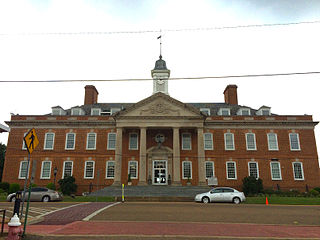
Hardin County is a county located in the U.S. state of Tennessee. As of the 2020 census, the population was 26,831. The county seat is Savannah. Hardin County is located north of and along the borders of Mississippi and Alabama. The county was founded in November 1819 and named posthumously for Col. Joseph Hardin, a Revolutionary War soldier and a legislative representative for the Province of North Carolina; the State of Franklin; and the Southwest Territory. Hardin County was the site of the Battle of Shiloh during the Civil War.

Savannah is a city in and the county seat of Hardin County, Tennessee, United States. The population was 7,213 at the 2020 census. Savannah is located along the east side of the Tennessee River.
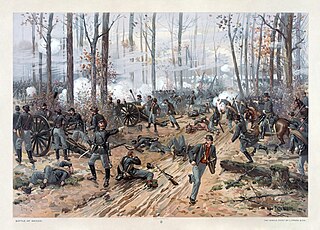
The Battle of Shiloh, also known as the Battle of Pittsburg Landing, was a major battle in the American Civil War fought on April 6–7, 1862. The fighting took place in southwestern Tennessee, which was part of the war's Western Theater. The battlefield is located between a small, undistinguished church named Shiloh and Pittsburg Landing on the Tennessee River. Two Union armies combined to defeat the Confederate Army of Mississippi. Major General Ulysses S. Grant was the Union commander, while General Albert Sidney Johnston was the Confederate commander until his battlefield death, when he was replaced by his second-in-command, General P. G. T. Beauregard.
Shiloh is the name of six places in the State of Tennessee in the United States of America:

The Army of the Tennessee was a Union army in the Western Theater of the American Civil War, named for the Tennessee River.
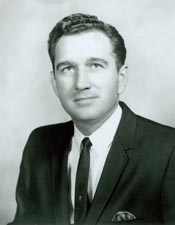
Leonard Ray Blanton was an American businessman and politician who served as the 44th governor of Tennessee from 1975 to 1979. He also served three terms in the U.S. House of Representatives, from 1964 to 1970. Though he initiated a number of government reforms and was instrumental in bringing foreign investment to Tennessee, his term as governor was marred by scandal over the selling of pardons and liquor licenses.

Shiloh National Military Park preserves the American Civil War Shiloh and Corinth battlefields. The main section of the park is in the unincorporated town of Shiloh, about nine miles (14 km) south of Savannah, Tennessee, with an additional area located in the city of Corinth, Mississippi, 23 miles (37 km) southwest of Shiloh. The Battle of Shiloh began a six-month struggle for the key railroad junction at Corinth. Afterward, Union forces marched from Pittsburg Landing to take Corinth in a May siege, then withstood an October Confederate counter-attack.

Louis Powell Harvey was an American politician and the seventh Governor of Wisconsin. He was the first Wisconsin Governor to die in office.

Shiloh Indian Mounds Site (40HR7) is an archaeological site of the South Appalachian Mississippian culture. It is located beside the Tennessee River on the grounds of the Shiloh National Military Park, in Hardin County of southwestern Tennessee. A National Historic Landmark, it is one of the largest Woodland era sites in the southeastern United States.
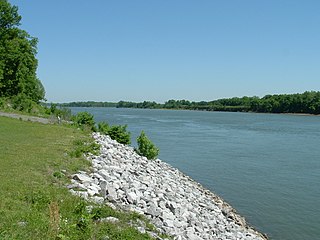
Pittsburg Landing is a river landing on the west bank of the Tennessee River in Hardin County, Tennessee. It was named for "Pitts" Tucker who operated a tavern at the site in the years preceding the Civil War. The landing helped connect the west side of the river to a road on the east that went back to Savannah. The landing was home to many families of settlers that migrated from about 1840 to 1860. It is located at latitude 35.15222 and longitude -88.32278 with an elevation of 482 feet (147 m). The aforementioned tavern was on the site that is now Shiloh National Military Park Visitor Center and Shiloh National Military Park/Pittsburg Landing Graveyard.

The 41st Ohio Infantry Regiment was an infantry regiment in the Union Army during the American Civil War.
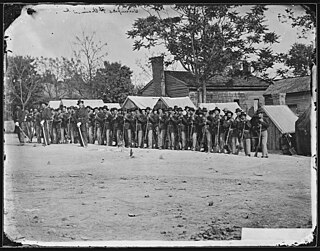
The 9th Indiana Volunteer Infantry Regiment was a volunteer infantry regiment in the Union Army during the American Civil War. It was organized on April 22, 1861, for three-months' service in Indianapolis. After being reorganized for three years' service in late August and early September 1861, the 9th took part in many major battles, including Shiloh, Stones River, Chickamauga, Lookout Mountain, Missionary Ridge, Kennesaw Mountain and the Siege of Atlanta.

Cherry Mansion is a historic antebellum house in Savannah, Tennessee, located on a bluff overlooking the east bank of the Tennessee River. It has historical significance for its role as General Ulysses S. Grant's headquarters at the time of the Civil War Battle of Shiloh.
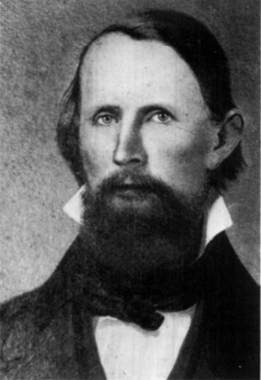
Benjamin Lewis Hodge was a Confederate politician who commanded the 19th Louisiana Infantry Regiment during the early stages of the American Civil War, including during the Battle of Shiloh.
The 5th Ohio Cavalry Regiment was a regiment of Union cavalry raised in seven counties in southwestern Ohio for service during the American Civil War. It primarily served in the Western Theater in several major campaigns of the Army of the Tennessee.
A Mississippi Landmark is a building officially nominated by the Mississippi Department of Archives and History and approved by each county's chancery clerk. The Mississippi Landmark designation is the highest form of recognition bestowed on properties by the state of Mississippi, and designated properties are protected from changes that may alter the property's historic character. Currently there are 890 designated landmarks in the state. Mississippi Landmarks are spread out between eighty-one of Mississippi's eighty-two counties; only Issaquena County has no such landmarks.
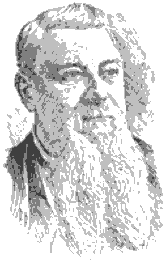
Sanders Dewees Bruce (1825–1902) was a Union Army colonel during the American Civil War and an expert on horse breeding. He authored the American Stud Book and The Horse-breeder's Guide and Handbook.
The Civil War Trust's Civil War Discovery Trail is a heritage tourism program that links more than 600 U.S. Civil War sites in more than 30 states. The program is one of the White House Millennium Council's sixteen flagship National Millennium Trails. Sites on the trail include battlefields, museums, historic sites, forts and cemeteries.
